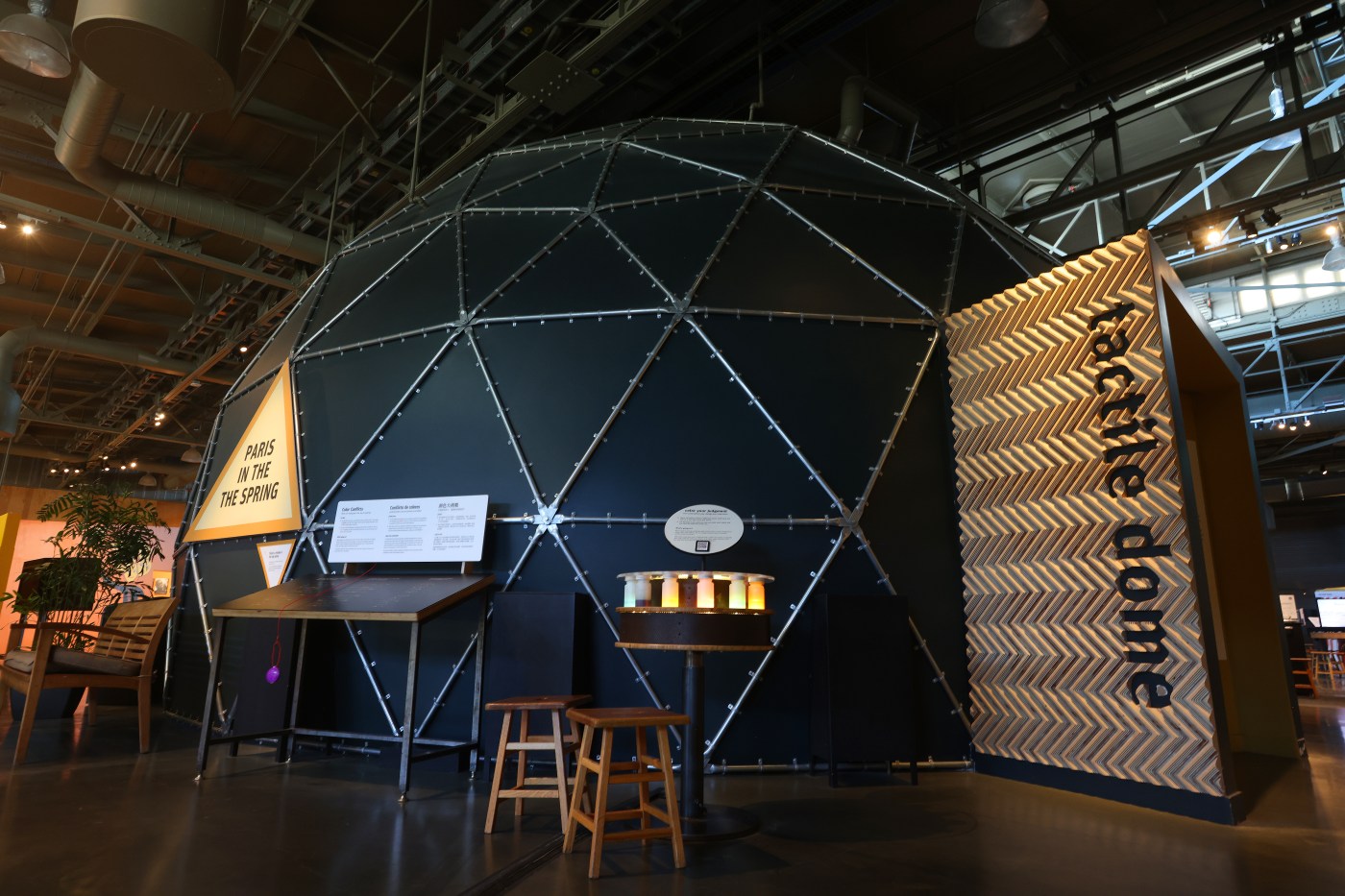
Let there be darkness! Inside the Exploratorium’s Tactile Dome
Light shows, LEDs and screen projections are all the rage these days. Everywhere you go, there seems to be some hoozit or whatzit aglow. It’s often for good reason — these visuals can be stunning — but whatever happened to less is more?
If that sentiment resonates, head for the San Francisco Exploratorium’s Tactile Dome. For more than four decades, this 33-foot-wide geodesic structure has plunged participants into complete darkness, challenging them to navigate a labyrinth of textures solely through touch.
Enter the dome, and you’ll spend the next five to 10 minutes walking, crawling, climbing, bouncing, twisting, turning and sliding your way through a sequence of 13 pitch-black chambers. All the surfaces — walls, floors and ceilings 00 of the chambers are covered in materials that blend, change and contrast, confronting explorers with a most tactile experience.
Bounce? Twist? Turn? The dome almost sounds like the immersive version of a Bop It. It isn’t just child’s play, says Rachel Hyden, the Exploratorium’s senior director of visitor engagement. Visitors of all ages are drawn to the darkness, and what they take away from it is as individual as they are.
“The experience is not particular to children or adults,” Hyden says. “We have adults for whom going through the dome is conquering a fear. For others, you can just hear the laughter and hilarity they’re experiencing as they go through. There’s no universal experience.”
The Tactile Dome exhibit at the Exploratorium immerses guests in complete darkness as they make their way through the exhibit using using only the sense of touch as a guide. (Aric Crabb/Bay Area News Group)
So, whose funny idea was it anyway to have people get on all fours and crawl their way through total darkness? The dome is actually the brainchild of Carl Day and August Coppola. (Yes, that Coppola, brother of filmmaker Francis Ford Coppola and father of actor Nicolas Cage.)
Coppola fostered a keen interest in perception bias. He argued that people rely too heavily on visual information to understand the world, often overlooking the sense of touch and developing a reluctance to physically engage with others and the environment.
Perhaps Coppola saw, early on, the ways in which modern society was trending towards isolation. However, even he may not have predicted the relevance of the dome in our digital age. In a world increasingly dominated by screens and technological distractions, the dome offers a rare experience, forcing visitors to disconnect from the visual and embrace the tactile.
Of course, a lot of attractions promise “immersive” activities, but the dome is the real, immersive deal. When the dome first opened in 1971, a press release from the Exploratorium reported visitors “compared the experience to being born again, turning yourself inside out head first, being swallowed by a whale and inevitably, being enfolded in a giant womb.”
So what exactly lies inside?
“I don’t want to give away all the secrets,” Hyden teases. “One of the things that we really try to maintain is the sense of mystery about the dome. We don’t tell you all the things, because we want it to be something you experience for yourself.”
Expect surprises. Darkness. And then, light.
Visit the Tactile Dome
The Tactile Dome is open from 10:15 a.m. to 4:15 p.m. daily, and from 6:15 to 9:15 p.m. for “After Dark” hours on Thursday nights at the Exploratorium on Pier 15. Dome tickets are $16 (reservation only), plus museum admission ($30-$40), and a portion of the exhibit is wheelchair accessible. Find more details on the Tactile Dome, ticket information and admission restrictions at exploratorium.edu.


